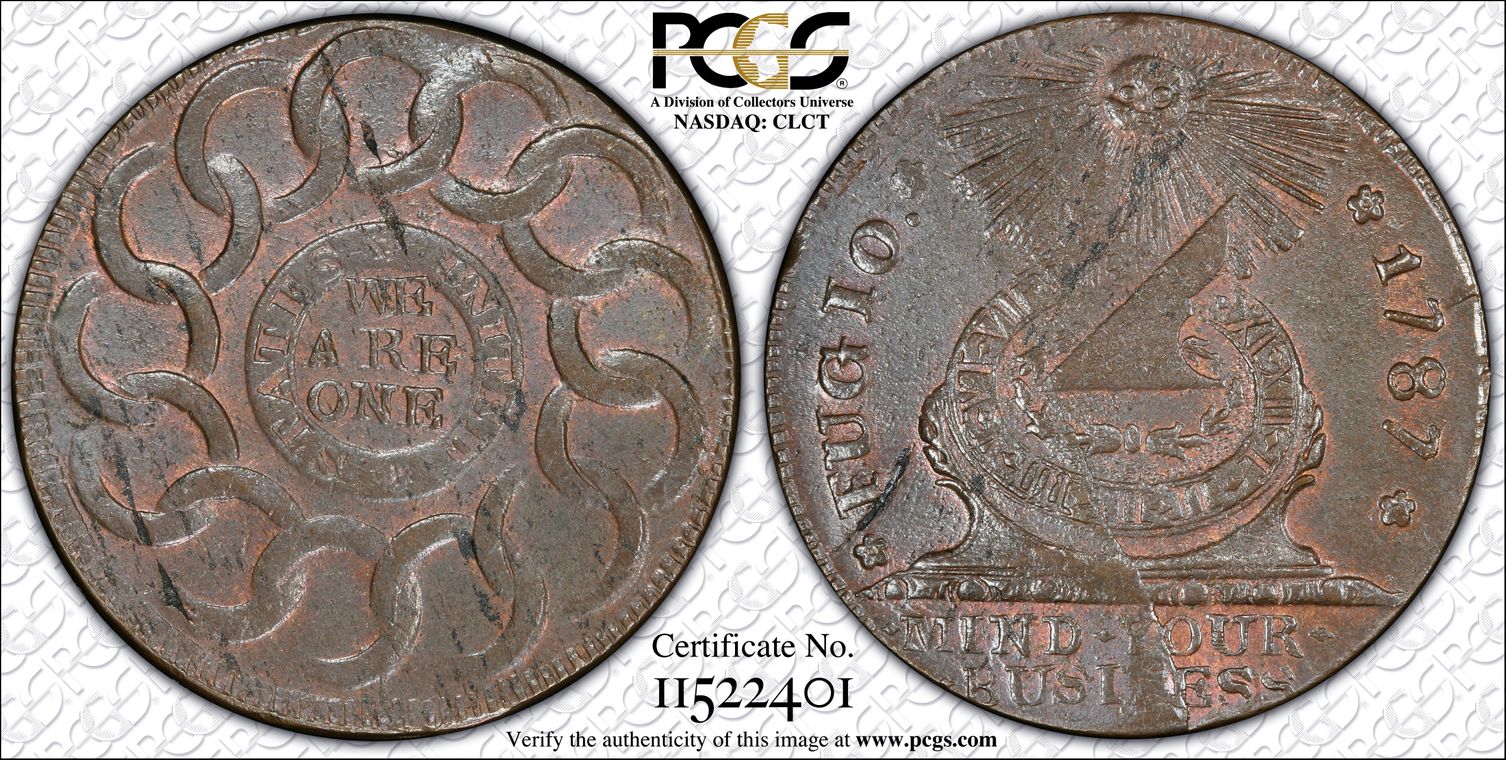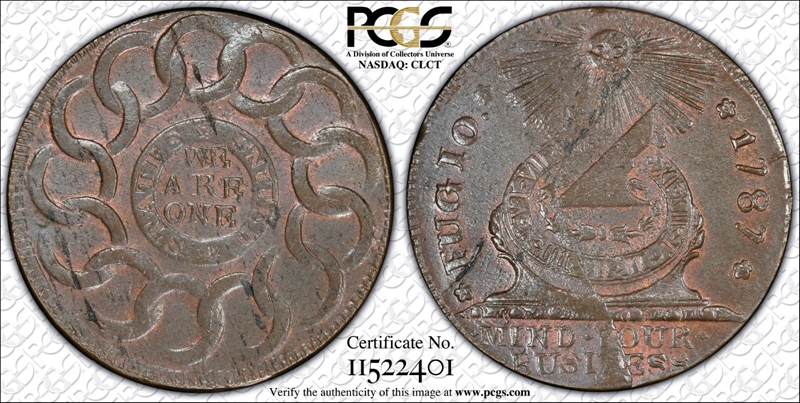拥有者评论
Very PQ, some mint bloom, perhaps not enough for RB designation. On 21 April 1787, the Continental Congress of the United States authorized a design for an official penny, later referred to as the Fugio cent because of its image of the sun shining down on a sundial with the caption, "Fugio" (Latin for "I flee"). The image and the word combine to mean "Time Flies". While most scholars attribute the sundial and link design to Benjamin Franklin, Breen recounts that Franklin only prepared the sketches from older representations. Whichever is correct, the obverse motif represents simplicity itself. By interpreting the central illustration, any child of the 1770s could "read" the obverse as follows: "Usable time (daylight hours, business hours) flies away; therefore mind your business." This symbolically states that time and daylight are fleeing, so don't waste them, hence "mind your business". This design had also been used on the "Continental dollar" (issued as coins of unknown real denomination, and in paper notes of different fractional denominations) in February of 1776. The Continental dollars, in turn, served as a model for the Fugio cents, struck 11 years later. Franklin also was the designer of the linked rings device seen on the reverse. It would seem that most historians believe that the word "business" was intended literally here, as Franklin was an influential and successful businessman. However, considering the full saying of "mind your own business," which would not have fit on the coin, it could also be interpreted as a statement of privacy. "Mind your own business" is a modern English saying which asks for a respect of privacy. It is often shortened, even aloud, to MYOB. In addition, "Mind your own business" can mean "Stop meddling in what does not concern you. Attend your own affairs. It's not polite to tell people what to do when you are not responsible for other people." The reverse side of both the 1776 coins and paper notes, and the 1787 coins, bore the third motto "We Are One" (in English). When the United States was reformed after the 1789 ratification of the 1789 Constitution, gold and silver coins bore the official motto of the new United States, E pluribus Unum, taken from the also non-religious 1782 Great Seal of the United States. In 1864, during the Civil War, the Union (North) introduced a 2-cent coin with the new motto "In God We Trust". In 1956, In God We Trust was mandated for all US currency, but more recently there have been calls for a return to the original mottos. Franklin's influence on contemporary society today is perhaps unrealized, yet it is enormous. Even though Franklin was never president, his influence on the nation was--and is--incalculable, and his ties with the portentous design on this delightful coin are many and deep. A Bank of New York hoard variety.






















